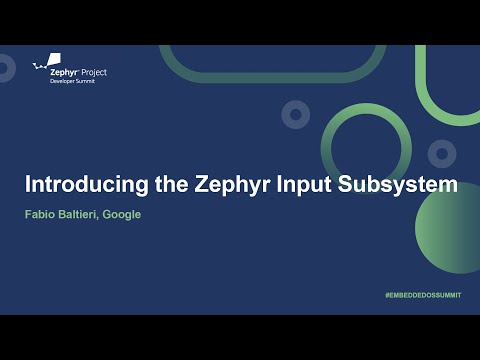Description:
Explore the Zephyr Input Subsystem in this 29-minute conference talk by Fabio Baltieri from Google, presented at a Linux Foundation event. Gain insights into the background, design decisions, and various modes of operation for this crucial component. Learn about intended use cases for different application types, including single listener scenarios, limited use cases, and capsense applications. Discover the distinctions between input devices and sensors, and delve into device-specific APIs like touchscreens. Understand how to allocate and register devices, send reports, and sync within the system. Examine the Input Event structure, driver APIs for GPIO keys and touchscreens, and the application API. Investigate different modes of operation, Kscan compatibility, extensibility options, and event filtering. Explore related topics such as the ZMK event system, NCS event manager, and the current state of the Input subsystem. Conclude with guidance on contributing patches and setting capabilities to enhance your understanding of this essential Zephyr component.
Read more

Introducing the Zephyr Input Subsystem
Add to list
#Engineering
#Electrical Engineering
#Embedded Systems
#Computer Science
#Information Technology
#Linux
#Microcontrollers
#GPIOs
#Operating Systems
#Device Drivers